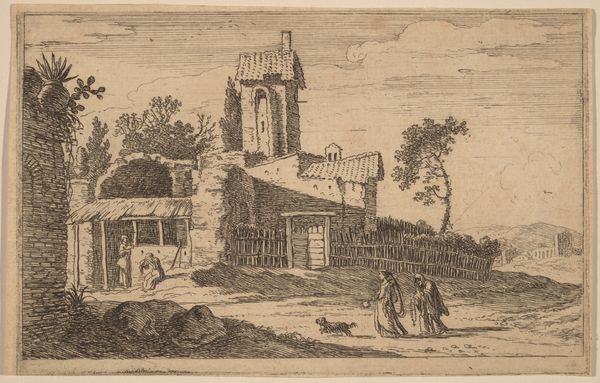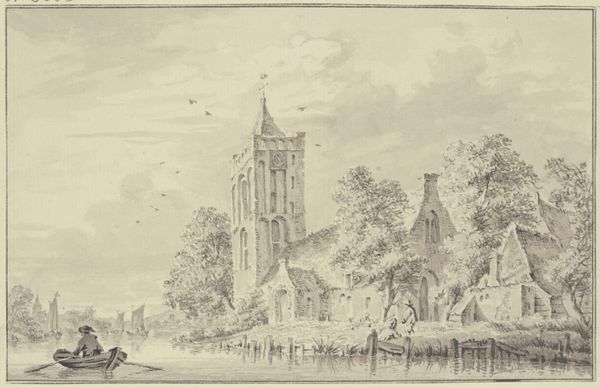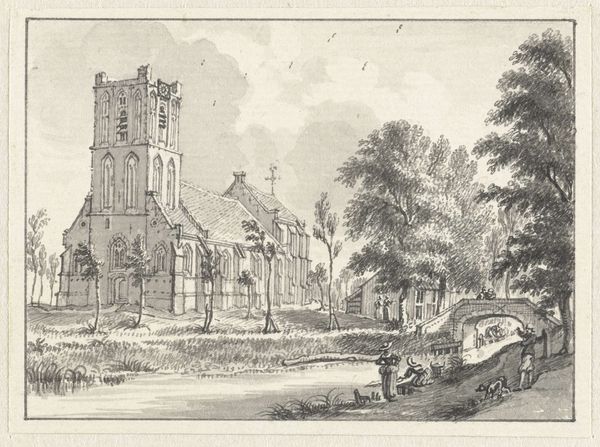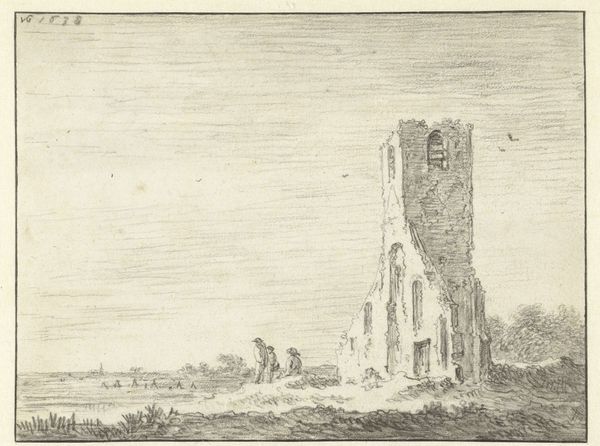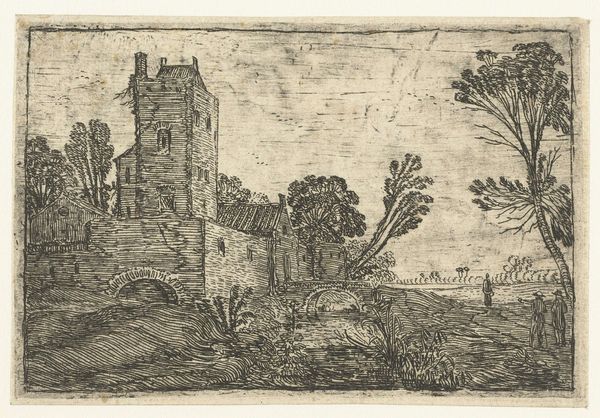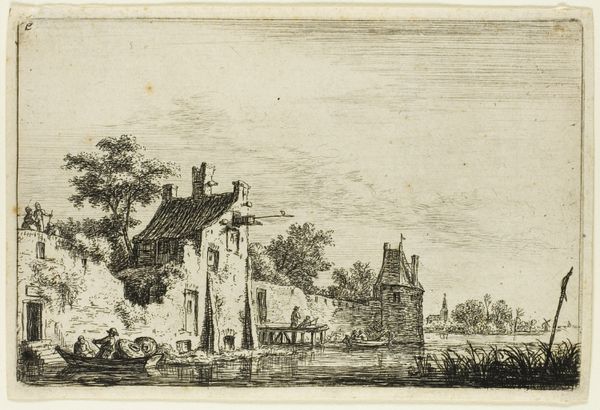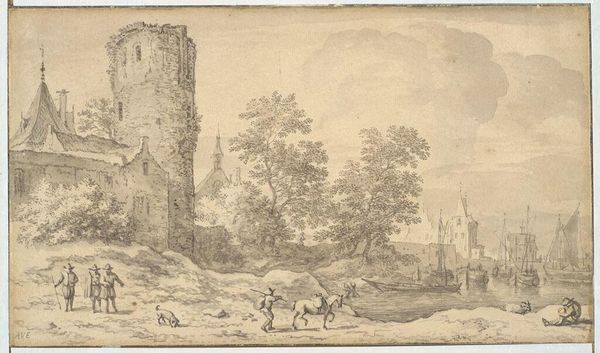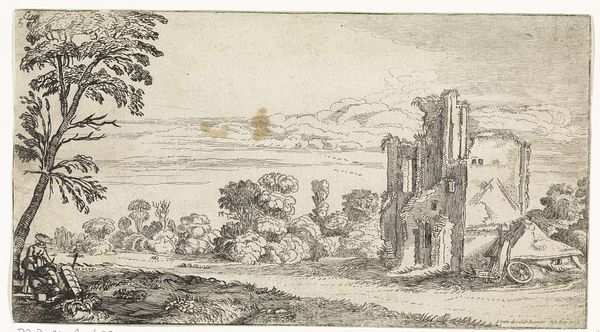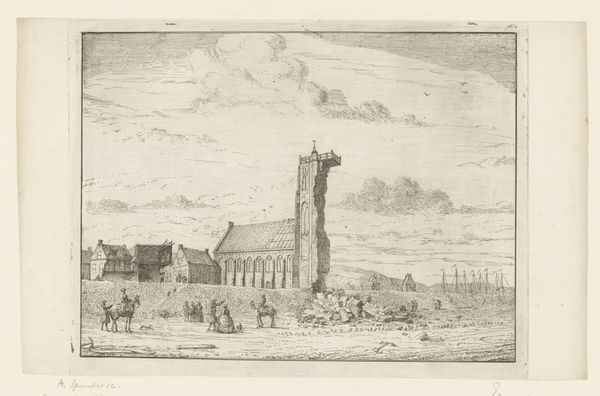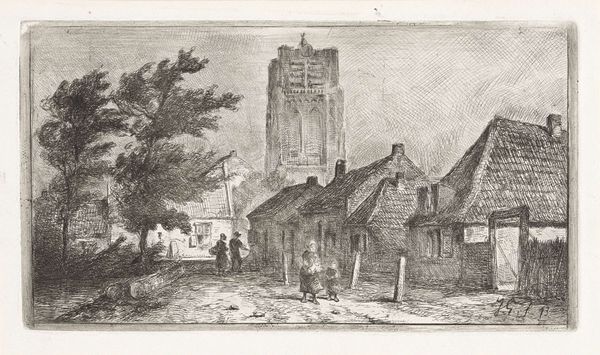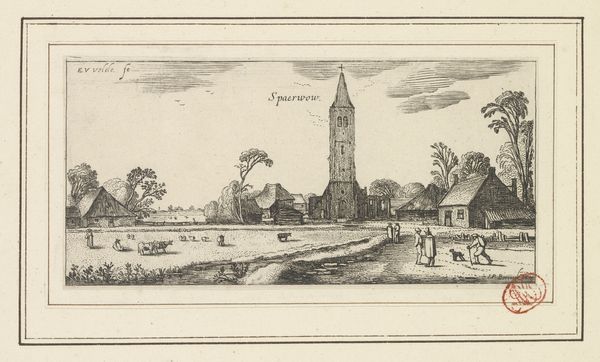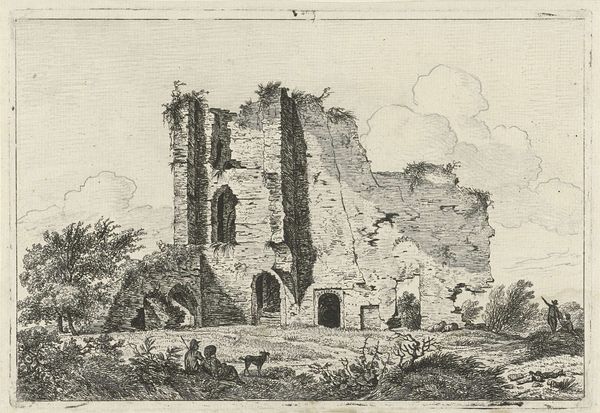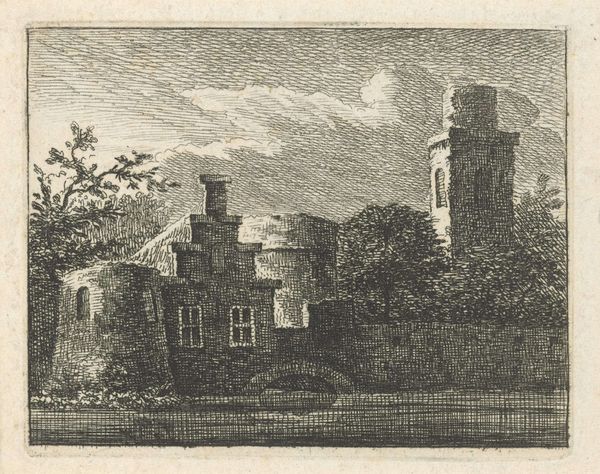
Ruins of the Chapel of Eykenduyen, near the Hague, from Verscheyden Landtschapjes (Various Little Landscapes), Plate 10 1611 - 1621
0:00
0:00
drawing, print, etching
#
drawing
#
baroque
#
dutch-golden-age
# print
#
etching
#
landscape
Dimensions: Sheet (trimmed): 3 3/8 × 4 15/16 in. (8.6 × 12.5 cm)
Copyright: Public Domain
Editor: Here we have Willem Pietersz. Buytewech’s etching, “Ruins of the Chapel of Eykenduyen, near the Hague.” It dates from the early 17th century. The decaying chapel in the countryside makes me feel a somber reflection on the passage of time. How do you interpret this work? Curator: This print offers a fascinating window into the Dutch Golden Age, a period of immense economic and social transformation following the Dutch Revolt. These ruins are more than just decaying stone; they symbolize the shifting power structures of the time. This was an era when religious identities were in flux. Consider how the artist chooses to depict the church not in its glory, but in its decay. What statements might Buytewech be making by highlighting the effects of time and potentially conflict? Editor: That's an interesting way of looking at it, almost as if the ruins are a visual metaphor for change and perhaps even the instability of religious power. It makes you wonder who or what caused the ruins. Curator: Exactly! And consider who these images were made for: the rising merchant class of the Dutch Republic. The land itself was becoming a commodity. By placing this ruin within a broader landscape, Buytewech also speaks to evolving ideas of ownership, nature, and the sublime. Could this be a commentary on land usage, and the consequences of wars of religion? Editor: So the image isn’t just about the ruins themselves, but also about the historical and societal context surrounding them and how they mirror political events? Curator: Precisely. Think about how the etching medium itself—relatively inexpensive and easily reproduced—made this image accessible to a broad audience, furthering its potential to shape public perception and cultural memory. What impact do you think accessible images had on societal discourse at the time? Editor: I hadn’t thought of that, but the democratization of images probably amplified conversations. This has certainly shifted my perspective from a purely aesthetic appreciation to understanding the print as a powerful commentary. Curator: Indeed. Looking closer helps us reveal its layered significance.
Comments
No comments
Be the first to comment and join the conversation on the ultimate creative platform.
